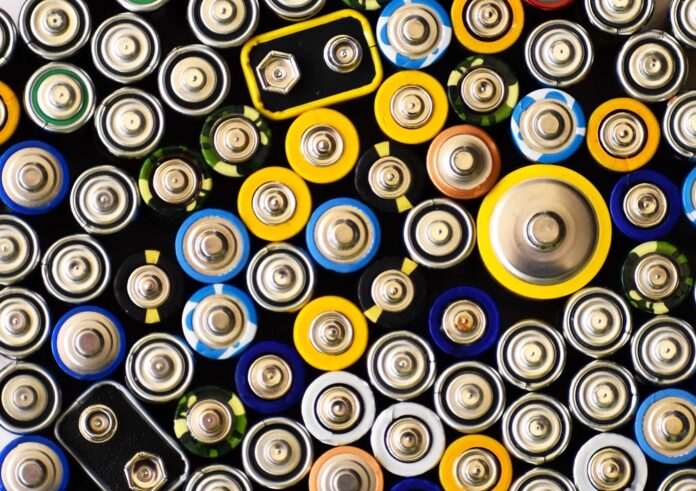COP28’s climate summit concluded with an agreement aiming to “speed up the transition to a cleaner and healthier economy” by 2030 to ensure the world meets the goals of the Paris Agreement that aims to limit global warming to 1.5 degrees Celsius. The agreement included commitments to tripling the use of renewable energy and doubling energy efficiency.
To facilitate the energy transition, rare earth elements (REEs) are necessary to propel the transition forward. They are crucial for the growth of various green industry sectors and emerging technologies such as electric vehicles, robotics, AI, and advanced computing.
In the coming years, REEs’ impact on the global economy and human life will lend them even greater importance than they already have. REEs’ impact on the global economy in the 21st century will be similar to that of oil in the 20th century.
REEs’ are expected to significantly impact geopolitics and geoeconomics as we move further into the 21st century. This increasing prominence of REEs is fueling a mining race for strategic minerals from the ocean floor to the surface of the moon.
For now, robust mining activities are limited to Earth, which means that regions with REEs deposits (i.e. Central Asia) will become the new hot spots for extracting the strategic minerals, just like how the petro-states were and when significant oil reserves were first discovered in Saudi Arabia and neighboring states.
The heart of the Eurasian landmass, where REEs deposits are abundant, is sandwiched between Russia, China, and the Indian subcontinent, home to a population of approximately 80 million people, from six countries (Kazakhstan, Kyrgyzstan, Mongolia, Tajikistan, Turkmenistan, and Uzbekistan), and is approximately half the size of Europe. It also sits on a veritable ocean of REEs according to the United States Geological Service.
With access to abundant critical resources, these countries like their Middle Eastern counterparts, suffer geopolitical hiccups, especially with Russia and China’s borders flanking the region’s North, Northeast, and Southeast, where the two superpowers are continuously influencing the region’s politics to gain an edge over each other while keeping the West out of the picture.
Iran and Afghanistan are also trying to get in on the action but are plagued by slow and clumsy political systems. Other parties like Europe and India are also seeking business opportunities in the region including access to cheap commodities. The United States’ interest in the region is mostly motivated by military considerations, most notably the costly war in Afghanistan, which cost it plenty of momentum and is getting in the way of Washington’s attempt to exert influence in the region.
However, the West hasn’t been deterred from joining the REEs market and is taking action to enter it. The largest producer of REEs in the region, Kazakhstan, is planning to provide “all the 30 critical raw materials the [European] bloc needs.” Kazakhstan is betting on REEs, promoting them at its annual Astana Financial Forum where it tries to win favor with investors.
During the forum, Kestutis Jankauskas, EU’s Ambassador to Kazakhstan encouraged the EU-Kazakh REE strategy, noting “there are quite big possibilities to develop business in the area of green hydrogen, climate change… Some of this is driven by necessity because we need rare earth metals for the Green Deal. Kazakhstan needs technologies, while the EU needs alternative supply sources.”
Kazakhstan’s well-developed mining sector and position as a key REEs producer make it an attractive candidate for a strategic partnership with the EU. This developing courtship between the EU and Kazakhstan is making both China and Russia uneasy, especially with China monopolizing REEs refining and the rocky relationship that has been created with the West as a result.
Mongolia is another potential regional partner to keep an eye on. The country is seriously invested in mining, and even though it is not currently mining for REEs, it still invests in exporting them.
During a visit to Mongolia in May, French President Emmanuel Macron emphasized “cooperation on the extraction and trade of minerals used in satellites, cell phones and other key technologies”.
When Mongolian Prime Minister Oyun-Erdene Luvsannamsrai visited Washington in August, he met with Vice President, Kamala Harris. The meeting culminated in a Joint Statement on the Strategic Third Neighbor Partnership implicitly pointing to REEs.
The region’s most populous country, Uzbekistan is keen to seize the opportunity of economic advancement presented by REEs. Uzbekistan has been recognized by the International Energy Agency as a vital partner for transitioning to green energy. It is estimated that the country has over $5 trillion in mineral resources. Alouddin Komilov from Uzbekistan’s Center for Progressive Reforms has pointed out that REEs are key to moving the world forward.
Kyrgyzstan has been eager to initiate its REEs revolution, however, it has been embroiled in a legal battle to nationalize the REEs exporting mine Kutessay-II since 2014. The legal dispute continues nearly a decade later.
Tajikistan has been struggling with its challenges as a nearly failed state rife with corruption, nepotism, and drug trafficking. The struggling nation is hoping that REEs will bring a much-longed-for economic respite.
Back in July, Ilkhom Oymuhammadzoda, head of the country’s Main Directorate of Geology, announced that efforts are being put into REEs. This announcement comes after a decade-long survey to locate REEs deposits within the country. Turkmenistan seems to be the only country in the region spurring development.
Asia’s REE reserves have been overlooked for a while, however, efforts to make up for lost time are being deployed. The latest example is an expansive study that addresses internal and external factors that play a role in the development of REEs sector. The study concluded that REEs in Central Asia are primed for public and private investment but those investments have to be “structured carefully” to ensure “successful production and avoid economic capture by China.”
For the time being, the United States seems to pay no serious attention to Central Asia’s REEs making the region vulnerable to Russian and Chinese economic intrusion. If the EU and U.S. wish to maintain their competitive edge economically, they must deploy measures to ensure they are not left at the mercy of Moscow and Beijing.



